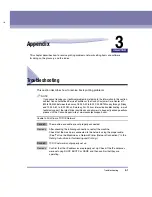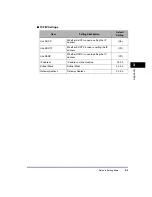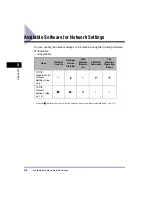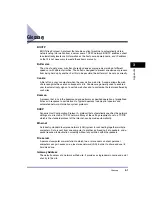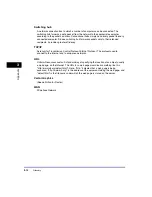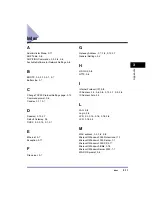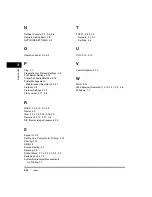
Glossary
3-8
Ap
pen
dix
3
HP-GL/2
A graphics language that allows computer applications to draw graphic images using
printers. Images in HP-GL/2 are represented as vector graphics. Vector objects describe
an image in terms of geometric shapes, such as lines and polygons, and fills. HP-GL/2 is
supported by your Canon machine.
HTTP
HyperText Transfer Protocol. The client-server TCP/IP protocol used on the World Wide
Web for the transfer of HTML (HyperText Markup Language) documents across the
Internet.
Internet Protocol (IP)
The underlying set of networking rules that describes how data is transmitted across the
Internet. Internet Protocol allows data from one computer to be split into packets to be
sent to another computer with a specific IP address.
IP address
Internet Protocol address. A 32-bit numeric address used by IP (internet protocol) to
specify a computer on the Internet. The IP address is usually written as four numbers
separated by periods. An example is 128.121.4.5.
LAN
Local Area Network. It is a network system formed by linking a server, workstations, and
computers, which are all located in the same building or some other relatively limited area.
Log in
Entering a user name and password as a means of user authentication to start a
computer session or access to a service.
LPD
Line Printer Daemon. A daemon is a program that runs, without human intervention, to
accomplish a given task. The Line Printer Daemon controls the flow of print jobs to a
printer.
MAC address
Media Access Control address. The hardware address of the network adapter of a
computer connected to a local area network.
Protocol
A set of rules that govern the transmission of data across a network. Examples of
protocols are FTP, DHCP, BOOTP, RARP, IPP, and TCP/IP.
Proxy server
A server that provides a cache of files available on remote servers that are slow or
expensive to access. The term “proxy server” normally refers to a World Wide Web server
that, on receiving a URL, tries to supply the requested file from its cache. If it cannot
locate the file there, the proxy server would bring it from the remote server and also save
a copy in its cache so that the next request can be obtained locally.








